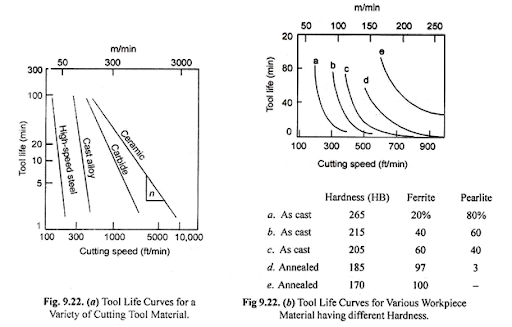
Week 6: Tool Life and factors affecting tool life
Lecture Notes Page 46
Tool Life
Tool life generally indicates the amount of satisfactory performance or service rendered by a
fresh tool or a cutting point till it is declared failed. Tool life is defined in two ways:
In R & D: Actual machining time (period) by which a fresh cutting tool (or point)
satisfactorily works after which it needs replacement or reconditioning. The modern tools hardly fail
prematurely or abruptly by mechanical breakage or rapid plastic deformation. Those fail mostly by
wearing process which systematically grows slowly with machining time. In that case, tool life means
the span of actual machining time by which a fresh tool can work before attaining the specified limit of
tool wear. Mostly tool life is decided by the machining time till flank wear, VB reaches 0.3 mm or
crater wear, KT reaches 0.15 mm.
In industries or shop floor: The length of time of satisfactory service or amount of
acceptable output provided by a fresh tool prior to it is required to replace or recondition.


